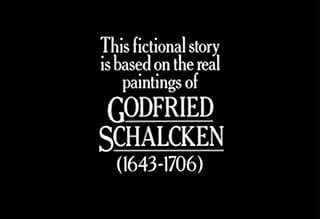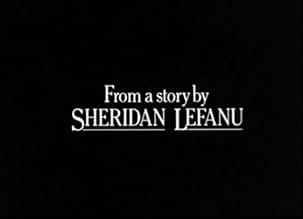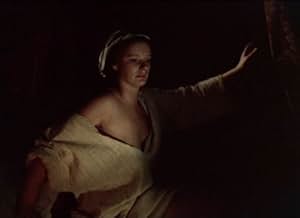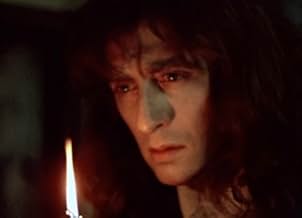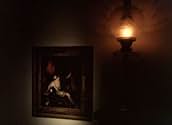Can Schalcken save his love, Rose, from the clutches of a ghastly suitor before it is too late?Can Schalcken save his love, Rose, from the clutches of a ghastly suitor before it is too late?Can Schalcken save his love, Rose, from the clutches of a ghastly suitor before it is too late?
- Director
- Writers
- Stars
Sarah Parry
- Model
- (uncredited)
- Director
- Writers
- All cast & crew
- Production, box office & more at IMDbPro
Featured reviews
10Beeryus
Only the BBC has the ability to outdo great writers, and even then, only rarely (Ashenden was one example, Jeeves and Wooster another). Here is one of the best examples: a classic BBC TV play adapted from J. Sheridan LeFanu's chilling short story of the same name.
The atmosphere of this TV film is incredibly disturbing, and the cast and crew all do a brilliant job to recreate one of the most chilling stories of gothic literature. Godfried Schalcken was a real painter who studied under Gerrit Dou in Leiden (Holland). Schalcken painted figures lit by candlelight, and his paintings are quite atmospheric. It is this dark atmosphere which suffuses LeFanu's work and this TV play. After seeing the movie, I took a trip to Europe, and had the chance to see some of the original paintings. They are brilliant in their depiction of light, shadow, and darkly captivating mood.
The TV play is a kind of allegory and a mystery, in which a young maiden (a rare appearance by the lovely and talented Cheryl Kennedy) is married off to a mysterious suitor and disappears. It falls to Schalcken (played brilliantly by Jeremy Clyde), who had used the girl as a model, to investigate. The horror that he uncovers haunts him (and his subsequent artworks) forever.
Unfortunately, like many late-night TV plays that were prevented from making it to VHS by a reactionary '70s era British VHS censorship debacle (the play features a very brief frontal nude scene, performed quite eerily by Cheryl Kennedy), this TV classic is now apparently lost. It has not been seen on TV for over a decade (as far as I'm aware), and like many '70s BBC masterpieces, seems destined to spend decades completely forgotten in some film vault. We can only hope that someone at the BBC will eventually find it and get the powers that be to release it on DVD or VHS. Hopefully soon!
The atmosphere of this TV film is incredibly disturbing, and the cast and crew all do a brilliant job to recreate one of the most chilling stories of gothic literature. Godfried Schalcken was a real painter who studied under Gerrit Dou in Leiden (Holland). Schalcken painted figures lit by candlelight, and his paintings are quite atmospheric. It is this dark atmosphere which suffuses LeFanu's work and this TV play. After seeing the movie, I took a trip to Europe, and had the chance to see some of the original paintings. They are brilliant in their depiction of light, shadow, and darkly captivating mood.
The TV play is a kind of allegory and a mystery, in which a young maiden (a rare appearance by the lovely and talented Cheryl Kennedy) is married off to a mysterious suitor and disappears. It falls to Schalcken (played brilliantly by Jeremy Clyde), who had used the girl as a model, to investigate. The horror that he uncovers haunts him (and his subsequent artworks) forever.
Unfortunately, like many late-night TV plays that were prevented from making it to VHS by a reactionary '70s era British VHS censorship debacle (the play features a very brief frontal nude scene, performed quite eerily by Cheryl Kennedy), this TV classic is now apparently lost. It has not been seen on TV for over a decade (as far as I'm aware), and like many '70s BBC masterpieces, seems destined to spend decades completely forgotten in some film vault. We can only hope that someone at the BBC will eventually find it and get the powers that be to release it on DVD or VHS. Hopefully soon!
I saw this film in 1979 and I never forgot it. The way the scenes are set up after old master paintings. In one scene Rembrandt appears briefly at the door in
wonderful chiaroscuro. The whole film seemed like one moving masterpainting. The horror is the better for being implied as in The turn of the Screw. It is a pity that filmmakers like this are so little known.
I would pay over the odds to get this on DVD. Filmmaking this excellent doesn't happen often enough. I totally agree with
other comments.
wonderful chiaroscuro. The whole film seemed like one moving masterpainting. The horror is the better for being implied as in The turn of the Screw. It is a pity that filmmakers like this are so little known.
I would pay over the odds to get this on DVD. Filmmaking this excellent doesn't happen often enough. I totally agree with
other comments.
I saw it and taped it when it went out and have never forgotten it. Sadly that was on Betamax in a former life. I agree entirely with everyone's observations on the piece.
And I have seen the original painting. Many years ago I was stood in the doorway of a huge room in an English stately home, listening to the information being given by the guide when I casually glanced to my left.
This was a very warm summer's day but my blood froze. I was resting against a wall covered in paintings and there next to my left elbow was the very painting of the girl shielding the candle, with her ghastly suitor's face in the shadows...
I can't remember which house it was though it might have been Woodstock near Oxford. But I will never forget that shock! The piece, from the Omnibus series, does still exist as a print so there is still hope...
And I have seen the original painting. Many years ago I was stood in the doorway of a huge room in an English stately home, listening to the information being given by the guide when I casually glanced to my left.
This was a very warm summer's day but my blood froze. I was resting against a wall covered in paintings and there next to my left elbow was the very painting of the girl shielding the candle, with her ghastly suitor's face in the shadows...
I can't remember which house it was though it might have been Woodstock near Oxford. But I will never forget that shock! The piece, from the Omnibus series, does still exist as a print so there is still hope...
10kettle41
If you feel moved by the paintings of Vermeer, Gerrit Dou, De Hooch, Frans Hals etc, you cannot fail to be moved by this story of the artist Schalken, a contemporary of the painters above. Directed with artistic delicacy and care, the film is shot almost entirely in what appears to be candle light, and the effect therefore, is both romantic and chilling at the same time. The story revolves around a series of actual paintings by Schalken - the originals of which are approximately 10 inches square - and we are taken through a story of love and ambition and downfall, with several scenes culminating in tableaux reminiscent of the paintings themselves.
This film was last shown, to my knowlege, on BBC in 1989, and is unavailable for purchase. I am keen to own a copy of it and would be so grateful if anyone has a video recording of it I might buy or even borrow!
Thanks, Ruth.
This film was last shown, to my knowlege, on BBC in 1989, and is unavailable for purchase. I am keen to own a copy of it and would be so grateful if anyone has a video recording of it I might buy or even borrow!
Thanks, Ruth.
The young lover of a student artist in 17th century Holland is spirited away in marriage by her guardian to a grim, wealthy suitor. Years pass, and the student becomes successful, but then he finds her again ...
A strange, cold story, with a fabulously eerie climax. Shot with all eyes on recreating the image of Dutch interiors, still lifes and portraits from the era, and very spare with the dialogue. I did feel the lovers' relationship should have been given more substance, but the performances are excellent, and the psychology of the protagonist is deep and not easy to understand. The outstanding theme is the treatment of women as objects, but the message is complex and rounded out with inevitable terror as life's betrayals and compromises accumulate.
Pace is a little slow and solemn. Music is harpsichord, sometimes contrasting in mood with what's on screen.
Overall, very interesting and the scene in the vault is a good 'un.
A strange, cold story, with a fabulously eerie climax. Shot with all eyes on recreating the image of Dutch interiors, still lifes and portraits from the era, and very spare with the dialogue. I did feel the lovers' relationship should have been given more substance, but the performances are excellent, and the psychology of the protagonist is deep and not easy to understand. The outstanding theme is the treatment of women as objects, but the message is complex and rounded out with inevitable terror as life's betrayals and compromises accumulate.
Pace is a little slow and solemn. Music is harpsichord, sometimes contrasting in mood with what's on screen.
Overall, very interesting and the scene in the vault is a good 'un.
Did you know
- TriviaVincent Price was a front runner for The Narrator. Peter Cushing was offered the part but rejected the project as distasteful.
- Goofs14 minutes in, as Schalcken abandons his painting and walks towards Rose, Jeremy Clyde's footsteps on the floor are not in synch with the footsteps we hear.
- Quotes
Narrator - Lefanu: In short, Schalcken was in love... as much as a Dutchman can be.
- SoundtracksIn Nomine
(uncredited)
Music by John Bull
Details
- Release date
- Country of origin
- Language
- Also known as
- Schalcken, o Pintor
- Filming locations
- BBC Ealing Studios, Ealing, London, England, UK(Gerrit Dou's studio and all exteriors)
- Production company
- See more company credits at IMDbPro
Contribute to this page
Suggest an edit or add missing content



